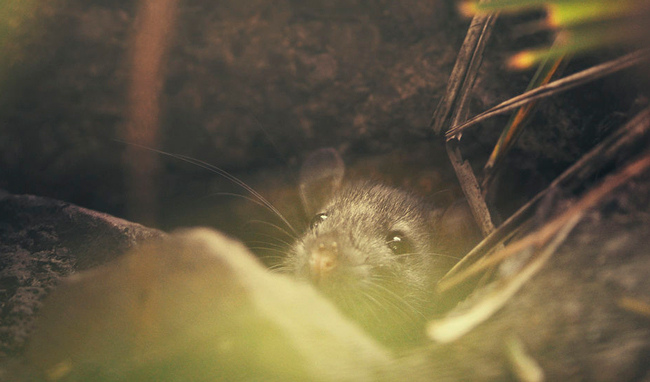Could Those Be Rat Holes?
By Chris Williams on August 22, 2013.

Question
My husband found some good-sized holes in our yard, mostly going under our shed. I’m worried that they’re rat holes. What do rat burrows look like? Is there any way to tell if it’s rats?
Answer
The first question is, do you have reason to think that you might have rats? If you’ve had a problem with rats before or if you live in a city where there are rats in the neighborhood, then rats are a possibility. If you live in a suburb or semi-rural area where there have been no rat problems, you probably don’t have rats now.
It’s difficult to say for sure that a burrow belongs to a rat, just based on its appearance. An animal sighting or other evidence such as the presence of nearby droppings could confirm whether it’s a rat or not. An inspection by a professional pest control company could give you more information.
Anatomy of a Rat’s Burrow
There are other burrowing animals whose burrows are similar to those made by rats, for example chipmunks or voles. The opening to a rat’s burrow is 2-3 inches across. In older burrows, the area around the opening is smooth from use, and there may be a worn trail to the burrow entrance. A freshly-dug burrow will have a loose fan-shaped scatter of excavated dirt around the opening. Rats like to locate their burrows under concrete slabs, piles of debris or stacked wood or stones, under large objects, under foundations, under shrubbery or in heavy ground cover, or in wood piles. Burrows are often located near garbage cans, dumpsters, or other food sources. Burrowing under a shed would be typical of a rat, but is also typical burrowing behavior for other nuisance animals like skunks or chipmunks.
Keep in mind that rats’ burrows, and the burrows of some other animals, often have more than one opening into the same burrow system. So, the number of openings that you see is not necessarily an indication of the number of animals living there. It’s not one hole per rat.
Is the Burrow Active?
One way to find out if the burrow is still in use is to lightly stuff the opening with wadded-up newspaper or dead leaves, or slightly collapse the opening. If the animal is still using the burrow, it will remove the blockage and clear the opening. This won’t confirm that it’s a rat but will tell you that something is living there. Sometimes what looks like burrow openings are really just shallow dig holes left by squirrels, raccoons, or skunks looking for nuts or grubs. Sticking a coat hanger or other probe into the hole can tell you whether it extends for any distance.
If you really want to know who’s living in those burrows, have Colonial do an inspection of your yard. We specialize in nuisance wildlife. Our animal control expert will confirm whether or not the holes are animal burrows, can tell you who’s living there, and can set up traps to catch the culprit.
Photo credit: Bristol Nature / Foter / CC BY-NC
Stay up-to-date with Colonial Pest’s email newsletter!